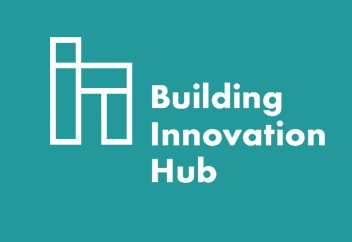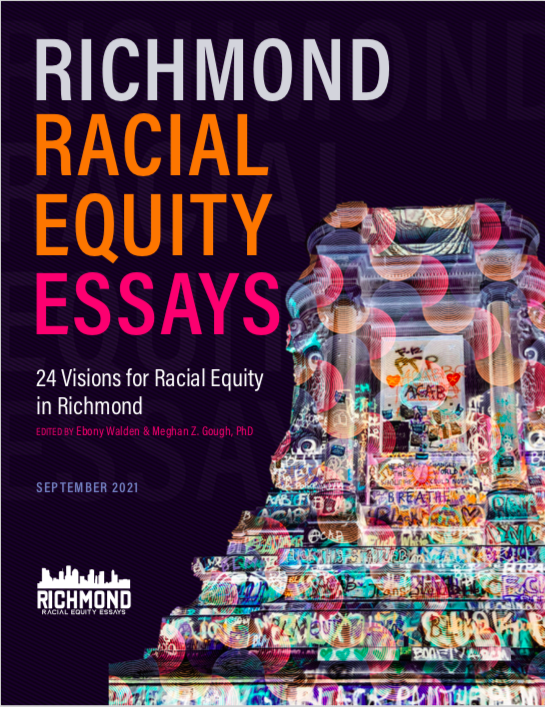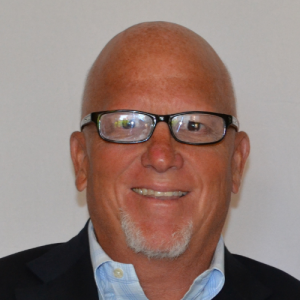April 6, 2021
The HAND network is hard at work to address the growing housing affordability challenge across the Capital Region. Five Minutes With is a series highlighting these members and other stakeholders. This informal conversation delves into their recent projects, the affordable housing industry, and more. In the latest edition, we have a conversation with Georgetown University’s Law Professor Anthony Cook. Cook chatted with us about his journey and how he landed in the community development industry. He explains the origin story of GateBridge, his forthcoming affordable housing community that will provide opportunities for renters to become homeowners and workers to become business owners. He highlights what sets GateBridge apart from other communities. Check out our dialogue below:
address the growing housing affordability challenge across the Capital Region. Five Minutes With is a series highlighting these members and other stakeholders. This informal conversation delves into their recent projects, the affordable housing industry, and more. In the latest edition, we have a conversation with Georgetown University’s Law Professor Anthony Cook. Cook chatted with us about his journey and how he landed in the community development industry. He explains the origin story of GateBridge, his forthcoming affordable housing community that will provide opportunities for renters to become homeowners and workers to become business owners. He highlights what sets GateBridge apart from other communities. Check out our dialogue below:
HAND: Tell us a bit about your journey. You have a really interesting story and extensive experience in a number of fields – can you speak to how you landed in the community development industry?
AC:I was born in the small rural community of Magnolia, MS. It was a community of mutual aid associations and relationships that had the church at its core. While none of us called it this at the time, I later came to understand it was, in fact, a community of residents engaged in a practice of community development: building and renovating each others’ houses; borrowing tools and lending expertise and assistance on a wide range of endeavors – from homestead repairs to quilting and canning vegetables, from growing crops, slaughtering hogs, and sharing with those in need to co-parenting and providing employment and enrichment opportunities for children. On the other hand, it was Mississippi, and one of my earliest childhood memories was of a cross being burned across the road in the churchyard – one of many threats against Black churches and communities involved in the civil rights movement and demanding the right to vote and equal rights. The community came together in many different ways to protect itself against domestic terrorists who intended to undermine democracy and harm our community. It was a tumultuous time, as are the times in which we live today, but growing up in that community taught me the importance of simultaneously building community through what we now call placemaking and establishing the necessary preconditions for communities and individuals to flourish. These were the laws, policies, structures, and systems that impacted life and opportunities within our community. So, in many ways, community development, a very rich and textured understanding of the term, is part of my DNA, and I have Magnolia, Mississippi to thank for that.
HAND: Let’s talk about GateBridge. How did it come about?
AC: As a Georgetown law professor, I’ve practiced and taught in the field of community development and affordable housing for many years. I understand the limitations and often contradictory policies around affordable housing for low-income and workforce populations. This work has led me to believe that building more affordable units is a necessary but insufficient solution to our present crisis in affordable housing, particularly as a tool for fighting poverty. The crisis facing under and disinvested communities are complex and intertwined. Poverty is highly racialized, place-based, gendered, and age-concentrated. These populations need quality housing in a stable and secure environment that furthers health and wellbeing, access to nutritious food, living wage jobs, and home and business ownership opportunities. All of these are interrelated parts of a larger problem sitting at the intersection of poverty and longstanding structural and systemic racism. In the future, affordable housing solutions will need to anchor affordable developments with the kind of robust placemaking that expands the capacity of residents and community to tackle these interrelated problems. GateBridge is a vision of how this can be accomplished – affordable residential units anchored by an incubator for placemaking and the kind of cooperative and community enterprise development needed to build the entrepreneurial capacity of residents to find solutions to problems confronted by their communities. It was this kind of rich and intentional placemaking and economic ecosystem that made it possible for a kid like me to thrive, despite growing up poor in one of the poorest states in the country. I believe these communities can do the same for others.
HAND: What sets GateBridge apart from other communities?
SK: GateBridge is a community of change-makers. It promotes multifamily limited-equity cooperatives anchored by an incubator for cooperative and other community businesses. GateBridgebuilds resident and community wealth by providing an opportunity for renters to become homeowners and workers to become business owners.
HAND: What excites you about this community? What challenges do you foresee?
AC: GateBridge Communities center placemaking as an indispensable tool for impacting under and disinvested communities. Only by building the capacities of residents to plan and execute their own community development can initiatives become sustainable. Sustainability is crucial to any long-term effort to reform structures, systems, and practices in place for generations. The primary challenge for GateBridge is building its balance sheet and finding balance sheet partners that can help expand our capacity to build a portfolio of GateBridge communities in the DMV and region.
HAND: What is one thing you wish you would have known at the beginning of your career?
AC: I wish I had appreciated then, as I do now, the vital need for legislative reforms in this space. In many ways, the system creating affordable housing shortages and our present crisis is designed to do exactly what it is doing. The definition of insanity is doing the same thing the same way and expecting a different result. Innovations in the market are possible around the edges, and GateBridge stretches the existing system to its limits, but to scale GateBridge-like innovations requires a different system of financing affordable housing. It requires recalibrating priorities around brick and mortar development on the one hand and human development on the other. Like GateBridge, the human development component can no longer be an afterthought. It must be an integral part of development, built into the capital stack and funded with the precision and care of the building itself.
HAND: As someone who took somewhat of an untraditional route into community development, what do you think is the largest hurdle when it comes to creating and preserving affordable housing across our region?
AC: Access to low cost and less extractive capital is essential. Federal funding programs like LIHTC make the construction and preservation of affordable housing much more complicated than it needs to be, largely because financing structures based around tax credit incentives serve the interests of an investor class over those of local communities. Low-interest federal loans channeled through community financial institutions to vetted and approved local developers, preferably those with a strong track record in the community, should cover ninety percent and more of the total cost of qualifying developments. Revising affordable housing financing structures would go a long way in meeting the demand for affordable and secure housing. Furthermore, there should be pathways to at least limited equity ownership for residents of multifamily units.
HAND: What is your “why”? What keeps you motivated to continue your work in this space?
AC: Many BIPOC communities have been devastated by a long history of policies originating beyond their communities: urban renewal, investment in suburban growth and the disinvestment in urban centers, redlining, gentrification, and inefficient neo-liberal, supplyside tax credit programs that have benefitted those not residing in under and disinvested communities more than it has benefited those within the communities. The pendulum must swing back in the direction of community-generated affordable housing anchored by the kind of placemaking and community wealth building envisioned by a GateBridge Community.
HAND: Do you believe there is a “secret sauce” to addressing housing affordability? If so, what do you think that is?
AC: Community-based access to long-term, low-cost, debt financing that covers at least ninety percent of the costs of producing affordable housing, along with funding for metrics-driven, evidence-based human development supports that improve residents’ quality of life and helps move them to greater self-sufficiency.
HAND: What is one thing most people don’t know about you? Do you have any hidden talents?
AC: I love traveling, fine dining, music, and stimulating conversation around visionary ideas and the nitty-gritty of bringing them to life.





 address the growing housing affordability challenge across the Capital Region. Five Minutes With is a series highlighting these members and other stakeholders. This informal conversation delves into their recent projects, the affordable housing industry, and more. In the latest edition, we have a conversation with Georgetown University’s Law Professor Anthony Cook. Cook chatted with us about his journey and how he landed in the community development industry. He explains the origin story of GateBridge, his forthcoming affordable housing community that will provide opportunities for renters to become homeowners and workers to become business owners. He highlights what sets GateBridge apart from other communities. Check out our dialogue below:
address the growing housing affordability challenge across the Capital Region. Five Minutes With is a series highlighting these members and other stakeholders. This informal conversation delves into their recent projects, the affordable housing industry, and more. In the latest edition, we have a conversation with Georgetown University’s Law Professor Anthony Cook. Cook chatted with us about his journey and how he landed in the community development industry. He explains the origin story of GateBridge, his forthcoming affordable housing community that will provide opportunities for renters to become homeowners and workers to become business owners. He highlights what sets GateBridge apart from other communities. Check out our dialogue below:



